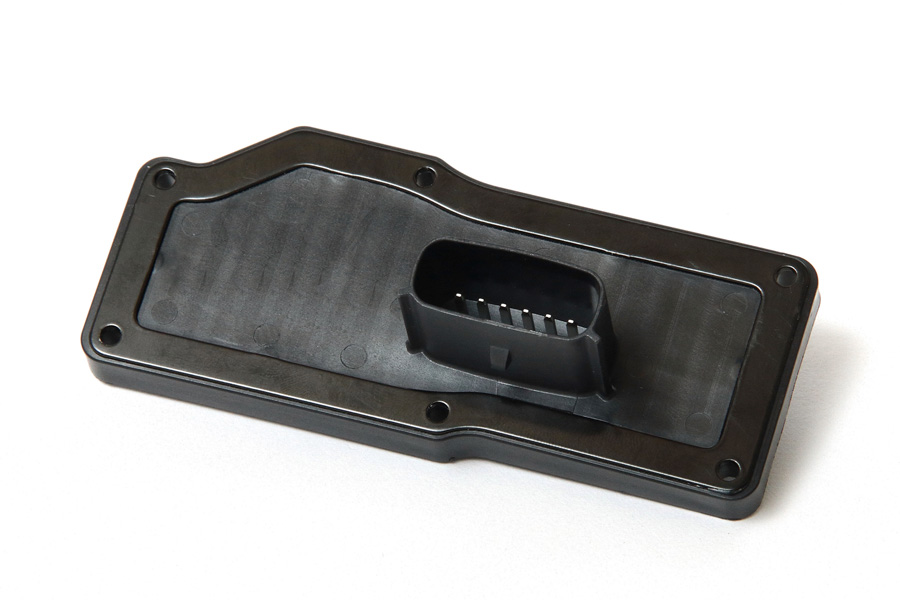
Your blog feed for digital manufacturing resources, in-depth features, and industry news.
These robust components are designed to reduce motor speed while increasing torque, making them ideal for machinery that operates under high stress and heavy loads. Whether you’re involved in manufacturing, material handling, or mining, understanding the role of heavy-duty speed reducers can help optimize your equipment performance and ensure long-term reliability.
In this article, we’ll dive into the importance of heavy-duty speed reducers, their key features, and why they are crucial for heavy-duty applications.
A heavy-duty speed reducer is a mechanical device that reduces the speed of a motor or engine while increasing its torque output. These reducers are built to withstand high levels of stress, often found in industries where machines are expected to handle heavy loads and operate continuously.
Heavy-duty speed reducers are built with durable materials like steel or cast iron, ensuring they can handle the harsh environments typical in heavy industrial applications. Whether it’s lifting heavy materials or driving large machinery, these reducers ensure the system works smoothly and efficiently.
High Torque Capacity One of the defining characteristics of heavy-duty speed reducers is their ability to deliver high torque. This is critical for applications that require substantial rotational force to move heavy objects, like cranes, conveyors, or mills. By increasing the torque, these reducers enable machinery to operate effectively under heavy loads without overloading the motor.
Durability and Strength Heavy-duty speed reducers are designed to handle extreme conditions. They are made from tough materials like hardened steel and cast iron, which can endure the harsh operating environments common in industries such as mining, construction, and agriculture. Their durability ensures that they can operate continuously without the need for frequent replacements.
Efficient Power Transmission These reducers are designed to ensure that power is transferred from the motor to the machinery in the most efficient manner possible. This minimizes energy losses and ensures that the full potential of the motor is utilized. Efficient power transmission also reduces energy costs and optimizes overall system performance.
Heat Dissipation When heavy-duty equipment operates for long periods, it generates heat. High-quality speed reducers are designed with heat dissipation features that prevent overheating, thus ensuring that the components last longer and the system operates without interruptions.
Customization Options Heavy-duty speed reducers come in various designs and configurations, such as worm gears, planetary gears, and bevel gears, allowing you to choose the right type for your application. This flexibility makes it easier to integrate the speed reducer into your specific machinery.
Heavy-duty speed reducers are used in a wide range of industries, especially those that require powerful and reliable machinery. Some common applications include:
Material Handling In industries like construction and logistics, heavy-duty speed reducers are used in conveyor systems, hoists, and elevators. These systems need to move large and heavy items, and the speed reducers provide the necessary torque to do so efficiently.
Mining and Extraction The mining industry involves heavy machinery like drill rigs, grinders, and transporters that need to operate under extreme stress. Heavy-duty speed reducers are critical in ensuring these machines can function optimally, moving large quantities of materials with precision and power.
Manufacturing In manufacturing plants, heavy-duty speed reducers are found in machinery that processes raw materials, such as presses, extruders, and milling machines. These machines often need to exert large amounts of force to shape, mold, or cut materials, which is where the speed reducer’s torque comes in.
Automotive and Aerospace In industries like automotive and aerospace, heavy-duty speed reducers are used in systems like robotic arms, assembly lines, and aircraft ground support equipment. They enable precise, high-torque movements, ensuring the machinery performs without fail.
Agricultural Equipment Agricultural machines such as tractors, harvesters, and plows require substantial torque to work in challenging environments. Heavy-duty speed reducers help power these machines efficiently, reducing wear and improving performance under load.
Enhanced Load Capacity Heavy-duty speed reducers enable machines to handle larger loads without the risk of overloading or breakdowns. This allows you to operate equipment at full capacity, improving productivity and reducing downtime.
Longer Equipment Lifespan By improving torque and reducing the strain on motors, heavy-duty speed reducers contribute to longer equipment life. These components can withstand harsh conditions and provide consistent performance, reducing the frequency of replacements.
Lower Energy Consumption An efficient speed reducer ensures that your motor operates at optimal speed and torque, reducing energy waste. This not only cuts down on operational costs but also improves the overall energy efficiency of your machinery.
Reduced Maintenance Costs Heavy-duty speed reducers reduce the wear on other components in the machinery, minimizing the need for expensive repairs or replacements. Their durability and reliability make them a wise investment for businesses that rely on high-performance machinery.
Improved Safety By ensuring that equipment operates smoothly and efficiently, heavy-duty speed reducers contribute to the overall safety of the workplace. Properly functioning reducers reduce the likelihood of mechanical failures, preventing accidents caused by malfunctioning equipment.
When you’re dealing with heavy machinery or demanding applications, the right speed reducer can make all the difference. Here are a few reasons why choosing heavy-duty speed reducers is a smart decision for your business:
In industries that demand high performance and reliability, heavy-duty speed reducers are essential. These devices ensure that machinery operates smoothly, efficiently, and safely, even under the most challenging conditions. By investing in quality heavy-duty speed reducers, businesses can enhance productivity, reduce downtime, and extend the lifespan of their equipment.
Whether you’re in manufacturing, mining, or agriculture, choosing the right heavy-duty speed reducer will give you the power, efficiency, and durability your business needs to succeed.
Your blog feed for digital manufacturing resources, in-depth features, and industry news.
31 Southlands Road
POLESWORTH
B78 0FL
We will reply to you in 20 minutes.
Our team is online, can be helpful for you.
Our team is online, can be helpful for you.
Didn’t find what you want? Ask our leader for help directly!